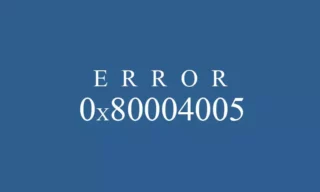Typing Spanish N with Tilde: Simple Alt Code Tricks for Windows and Mac
Writing the letter N with a tilde can be tricky. In Spanish and Portuguese, the tilde or virgulilla is used to denote a nasal sound in the letter N and can be found over other vowels in certain words as well. But how do you write this symbol?
In this blog post, we’ll explain how to write N with tilde using several different methods. We’ll also go over some of the rules that govern when and where to use it in Spanish and Portuguese writing. Ready to learn more?
What is the tilde?
The tilde (~) is a diacritical mark that is placed over certain letters to change their sound or meaning.
In Spanish, for example, the tilde is used over the letter n to indicate that the word should be read with a nasal sound, as in niño (child).
In mathematical notation, the tilde is used to denote an approximation, as in ā ~ 2.4 (a is approximately equal to 2.4).
How to type N with tilde?
If you want to type the letter “ñ” on a computer, there are a few different ways you can do it
N with tilde Alt code
To type the tilde character on a keyboard, you can use the Alt code method.
- First, make sure that your Num Lock key is turned on.
- Then, hold down the Alt key
- Type 0241 on the numeric keypad. Once you release the Alt key, the tilde character will appear. This should give you the letter ñ.
If you want to capitalize, you need to press the Alt key and 0209 on the numeric keypad. This should give you the letter Ñ.
Note: If your keyboard doesn’t have a numeric keypad, you can usually find one by looking for the Num Lock key.
Once you’ve found it, press and hold down the Fn key (usually located near the bottom-left of the keyboard) and then press and release Num Lock. You should now be able to use the numeric keypad to type numbers and symbols.
Using Character Map
Alternatively, you can use the Character Map application to insert ñ into your document.
- In Windows, Character Map is located in the Start menu under Accessories > System Tools. (In Mac OS X, you’ll find it in the Applications folder.)
- Once you’ve launched Character Map, make sure that the Unicode Subrange is set to Latin-1 Supplement, then scroll down until you find ñ and click on it.
- Finally, click the Select button and then the Copy button. You can now paste ñ into your document.
Examples of Tildes in Use
There are many examples of tildes in use, both in Spanish and in other languages.
In Spanish, the tilde is used over the letters n and ñ to indicate that the letter should be pronounced differently than usual.
In other languages, such as French and Portuguese, the tilde is used to indicate a nasal vowel sound.
- In Spanish, the tilde is used on the letter n in words like señor (sir), señora (madam), and señorita (miss). The tilde changes the pronunciation of these words from /se-nör/ to /se-nyör/.
- The tilde is also used on the letter ñ in Spanish words like mañana (morning), niño (boy), and cañón (canyon). The tilde changes the pronunciation of these words from /ma-na-na/ to /ma-nya-na/, /ni-ño/ to /ni-nyo/, and /ca-ño-n/ to /ca-nyo-n/.
- In French, the tilde is used over certain vowels to indicate that they should be pronounced with a nasal tone. For example, in the word bonjour (hello), the o is underlined with a tilde to show that it should be pronounced /bõʒu̯ɔr/. Without the tilde, this word would be pronounced /bo-ʒu-ɔr/.
- In Portuguese, the tilde is also used over certain vowels to indicate a nasal tone. For example, in the word sim (yes), the i is underlined with a tilde to show that it should be pronounced /sĩ/. Without the tilde, this word would be pronounced /si/.
Conclusion
Writing the letter N with tilde is a great way to add character to your writing and show off your knowledge of Spanish, Portuguese, or another language that uses this symbol.
With our detailed guide, you now know all the different methods available for creating a tilde over an N so that you can quickly achieve the desired result.












